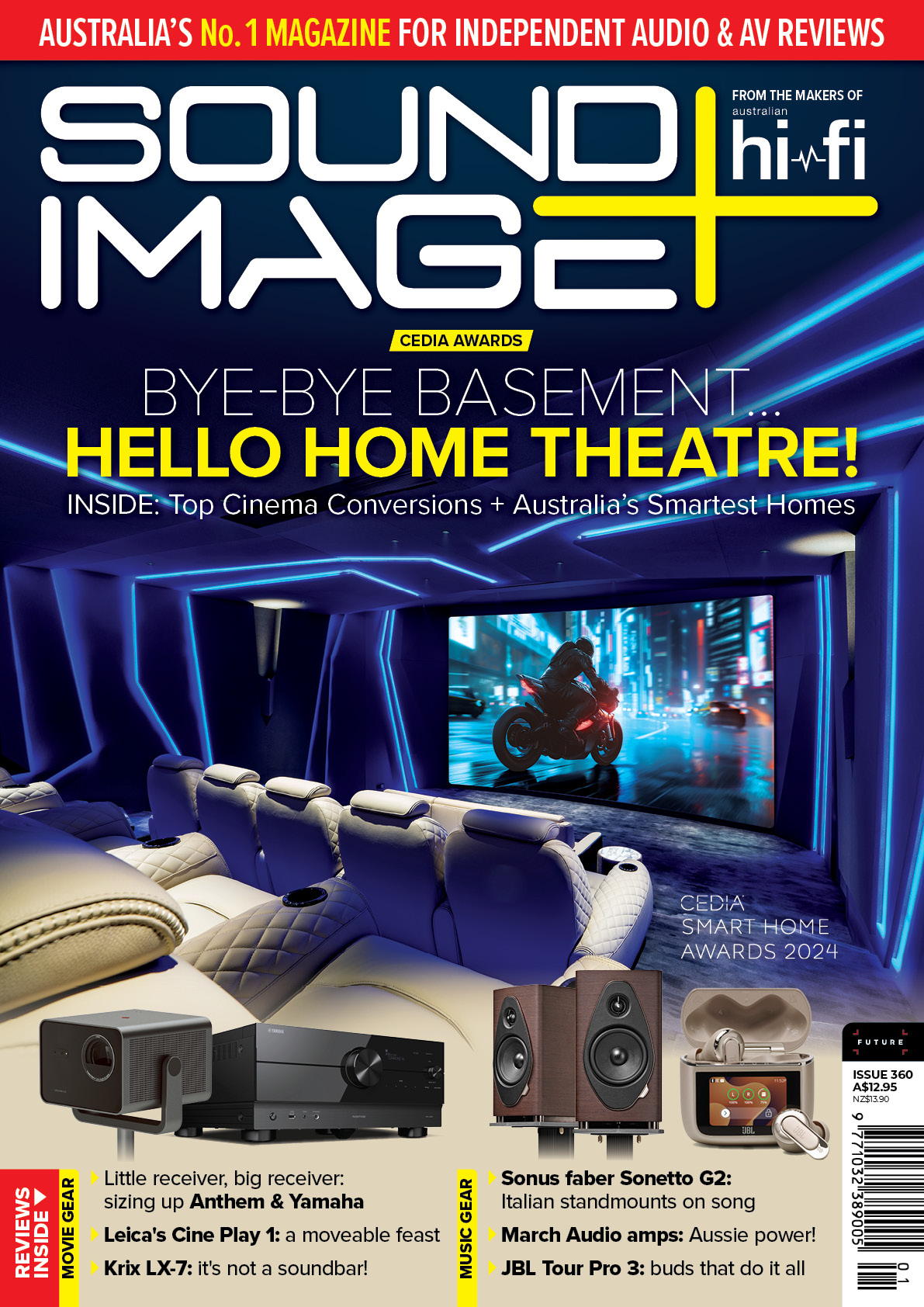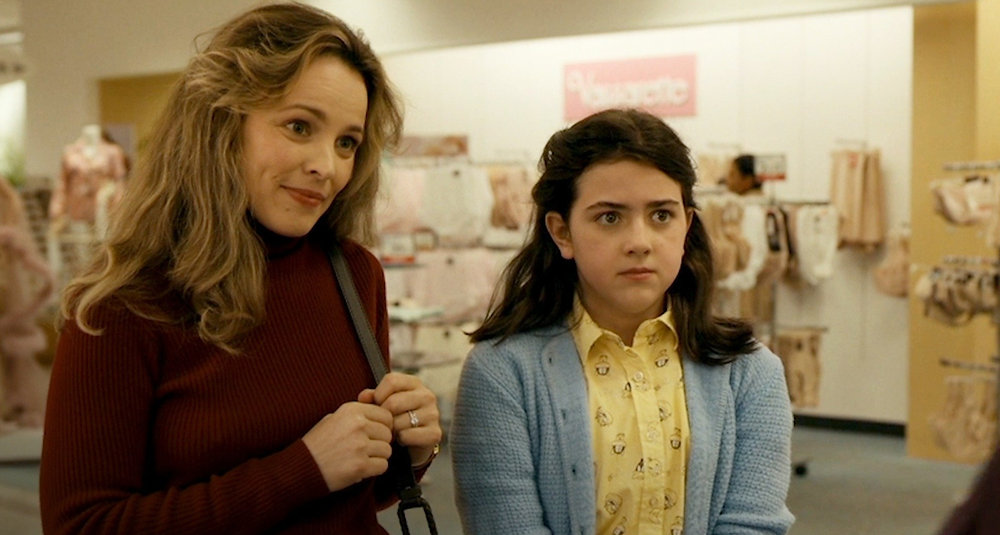Aussie home theatre rooms: The Director's Chair!
A movie industry insider requested Screening Room-standard performance for this Sydney home cinema
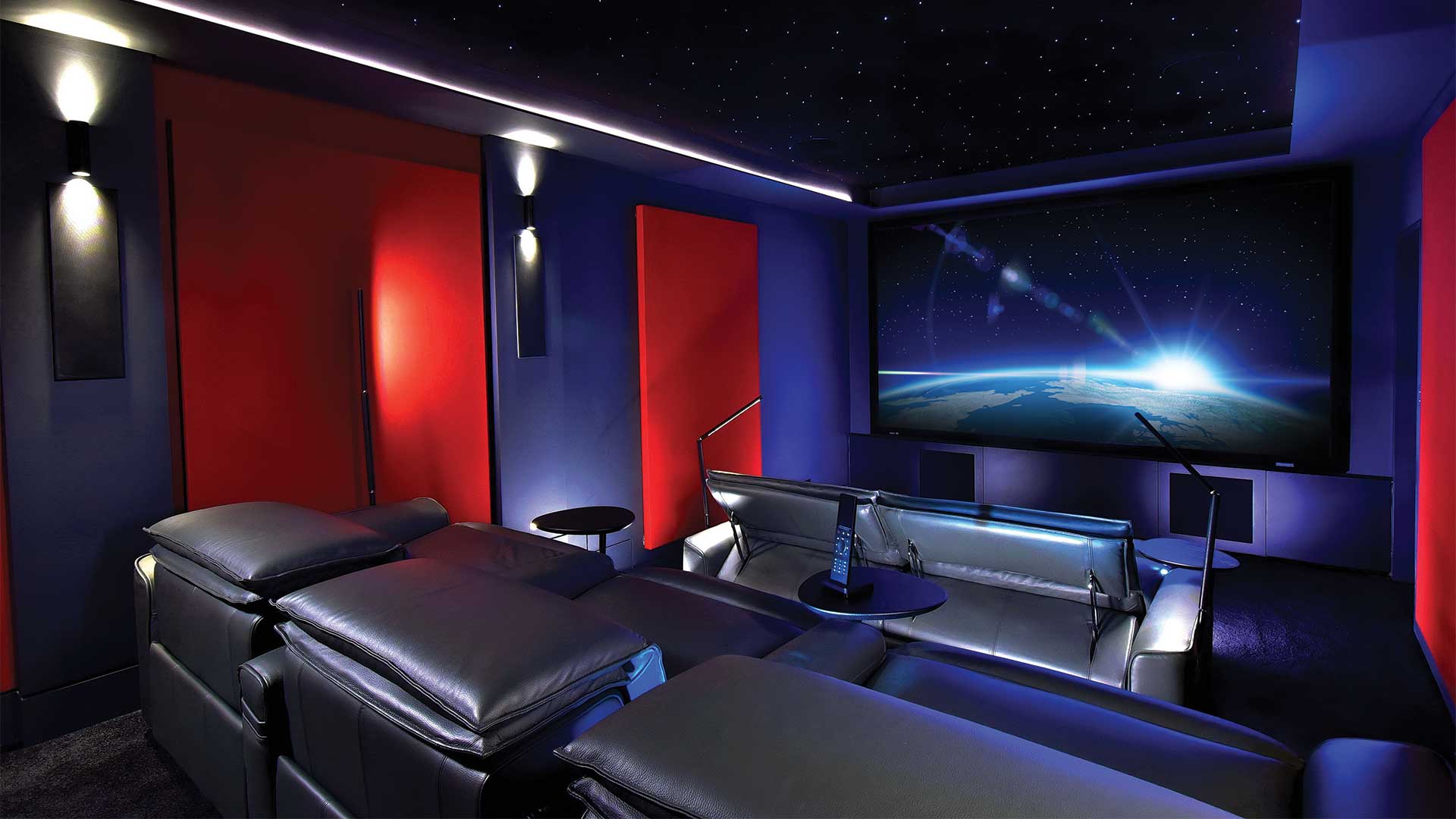
It’s one thing to design a home cinema for a movie enthusiast, but another thing entirely when your client actually works in the movies. Matt has spent his working life in editing suites working on major blockbuster movies, so when he and his family decided to commission a dedicated theatre on the lower level of a new-build home, he knew exactly what he wanted.
“I wanted a professional director’s screening room,” Matt told us when we visited the spectacular ocean-front residence and were led downstairs, where a corridor leading to the underground car park branched left to an engraved cinema door. “Having worked in the film industry for over 20 years as a director and editor, I have this passionate love for cinema, and I knew what I wanted to fill this space. And having worked on previous projects together, I knew Alberto was the only one I trusted to make it a reality.”
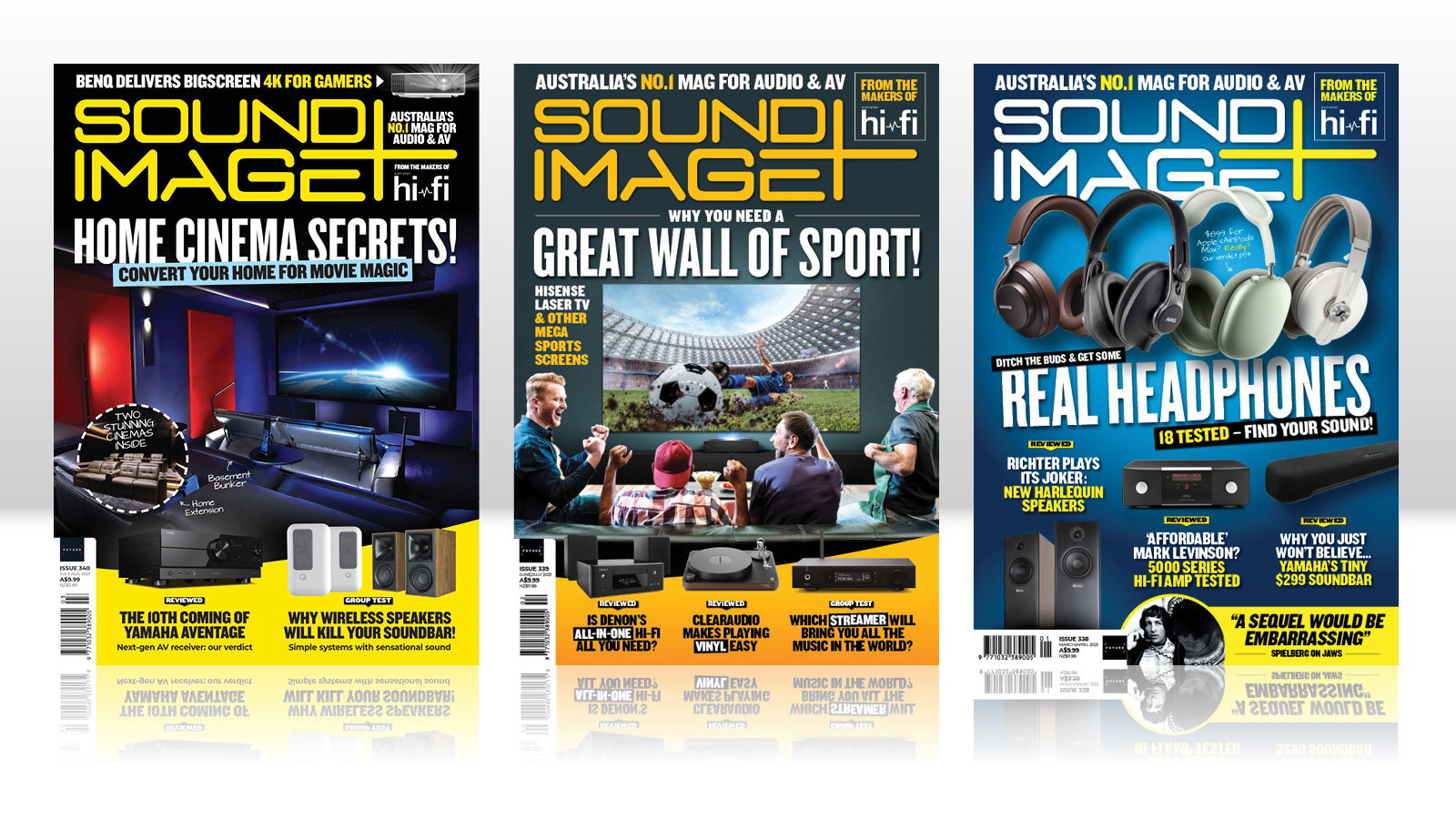
This feature originally appeared in Sound+Image magazine, one of What Hi-Fi?’s Australian sister publications. Click here for more information on Sound+Image, including digital editions and details on how you can subscribe.
Signature Cinemas
The idea, Matt says, was to create a “kick-arse” room that is a throwback to classic Hollywood picture theatres, but with state-of-the-art technology and a contemporary flair. Enter Signature Cinemas, a relatively new company delivering bespoke home cinemas, media rooms and smart homes, founded by Alberto Vangi to leverage his 20 years of experience in delivering projects for some of Sydney’s major industry names. This cinema room has been a 12-month project, with Signature Cinemas engaged from the very beginning.
“I was given the opportunity to do this project from the concrete shell,” says Alberto. “So the client didn’t provide any interior designers, no architect. The project manager essentially said ‘Alberto, this room’s yours, you decide the builder you want to use, draw it up and provide the room start to finish, and it’s between you and your resources to complete the room’.”
But he did have a solid brief from Matt – notably the ‘Director’s Chair’ concept. The room is approximately 7.7 × 3.8 metres, with a 160-inch Stewart Filmscreen 16:9 screen illuminated by a Sony native 4K projector, and reference-level sound delivered in what could be described as a 7.4.4-channel delivery (see overleaf). Alberto specified a five-seat cinema, with two spacious lie-back loungers at the front, and three state-of-the-art recliners in the rear row.
“Yes, the key was that back middle seat, to make that seat the ‘Director’s Chair’ that Matt wanted,” says Alberto. “Then around that I created further seating for the front and the rear row, while by applying Trinnov mathematics I was able to ensure I still had the required 800-900mm from the back wall and all the correct viewing angles to the screen. Trinnov I refer to as the absolute benchmark in processors, and although it isn’t the processor at this instance – though that might make a future upgrade – the room followed their recommendations in very specific fine details, with their recommended angles for both audio and video listening and viewing positions. By applying their mathematics I was able to provide perfect symmetry in the room for the sound. It made a world of difference to the overall experience.”
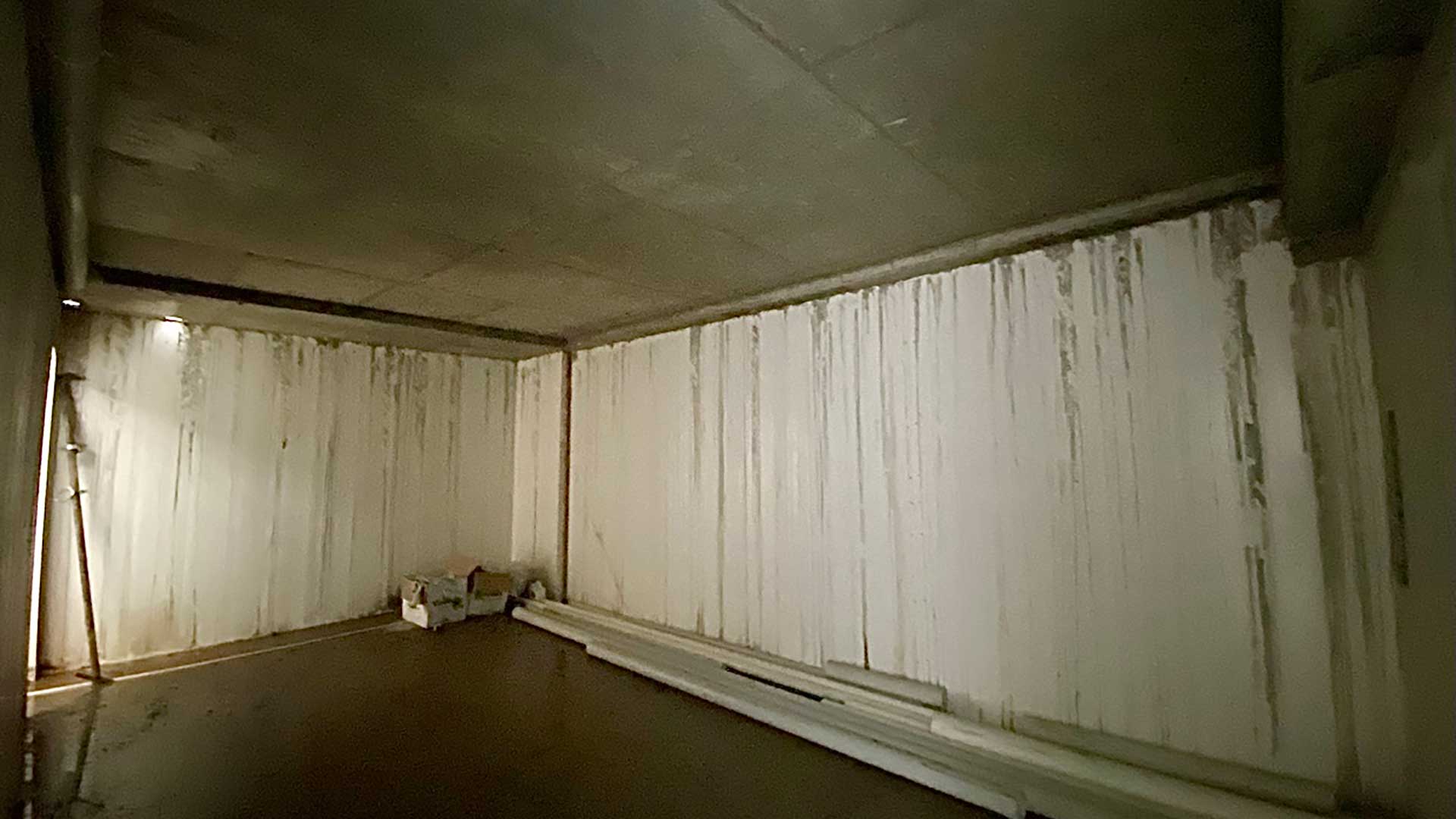
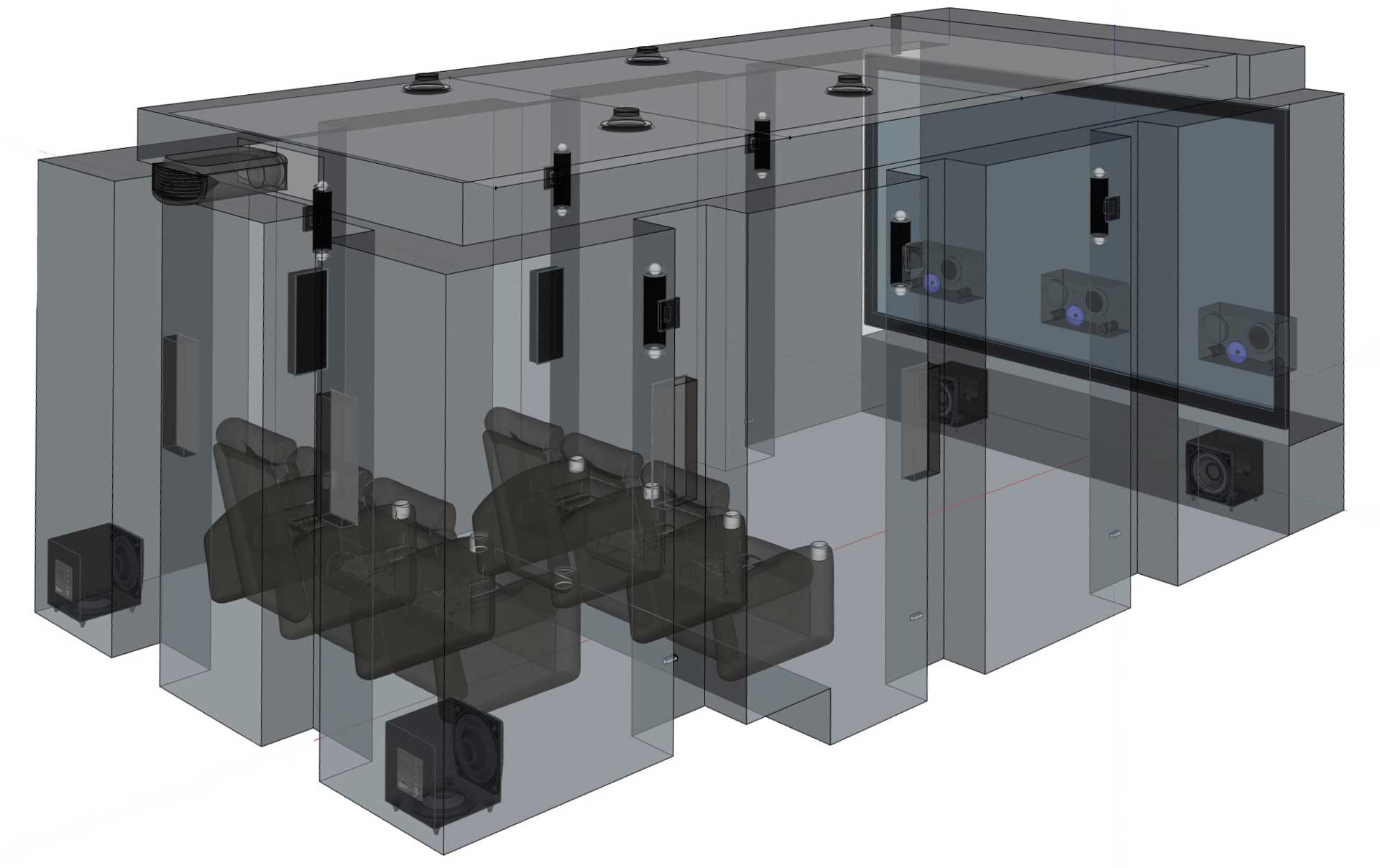
Build and design
It turned out that both Matt and Alberto are fans of Cremorne’s Orpheum cinema with its classic style, and the decision was made to incorporate that feel into the new cinema.
Get the What Hi-Fi? Newsletter
The latest hi-fi, home cinema and tech news, reviews, buying advice and deals, direct to your inbox.
“We knew we wanted to bring a bit of red into the room,” says Alberto. “I did a lot of research into red, how human eyes are less sensitive to red and it reflects very little light, so maintaining the contrast for the screen. Essentially I was trying to avoid it being a big grey box – we needed to put some colour in the room, some depth, and that’s why we went with this acoustic panelling.”
The red panels on the side walls are acoustic panelling from Ultrafonic, the Queensland-based acoustic consulting company, where the panels were all
custom-made to size and finished in what Alberto describes not as an outright red but as a very specific shade of ‘cherry’.
“We selected all the locations to make sure they agreed with his acoustic engineering, and essentially that was the key to the acoustics of the room,” says Alberto. “Meanwhile the builder was Innovative Building Services, one of Sydney’s most respected luxury home builders – we’ve done a number of cinemas together in the past. The reason I use him [Joe Fuda, the owner] is because even when there’s an ample amount of bass, there’s no rattle in the rooms, they’re particularly solid. He always uses SoundChek gyprock, he uses the Green Glue, he also uses the Safe’n’Sound rockwool in the walls [a stone-wool sound insulation product]. Here he’s applied all the key cinema guidelines and built another beautifully finished and solidly-built room.”
Also helping keep the sound within the room is the sound-sealed 50mm solid timber acoustic door, which Alberto notes as carrying another touch from the Cremorne Orpheum.
“I actually wrote to the Orpheum management team looking for the font they use in their typography,” he says. “We paid for its use so we could engrave the world ‘Cinema’ in that font on the door itself.”
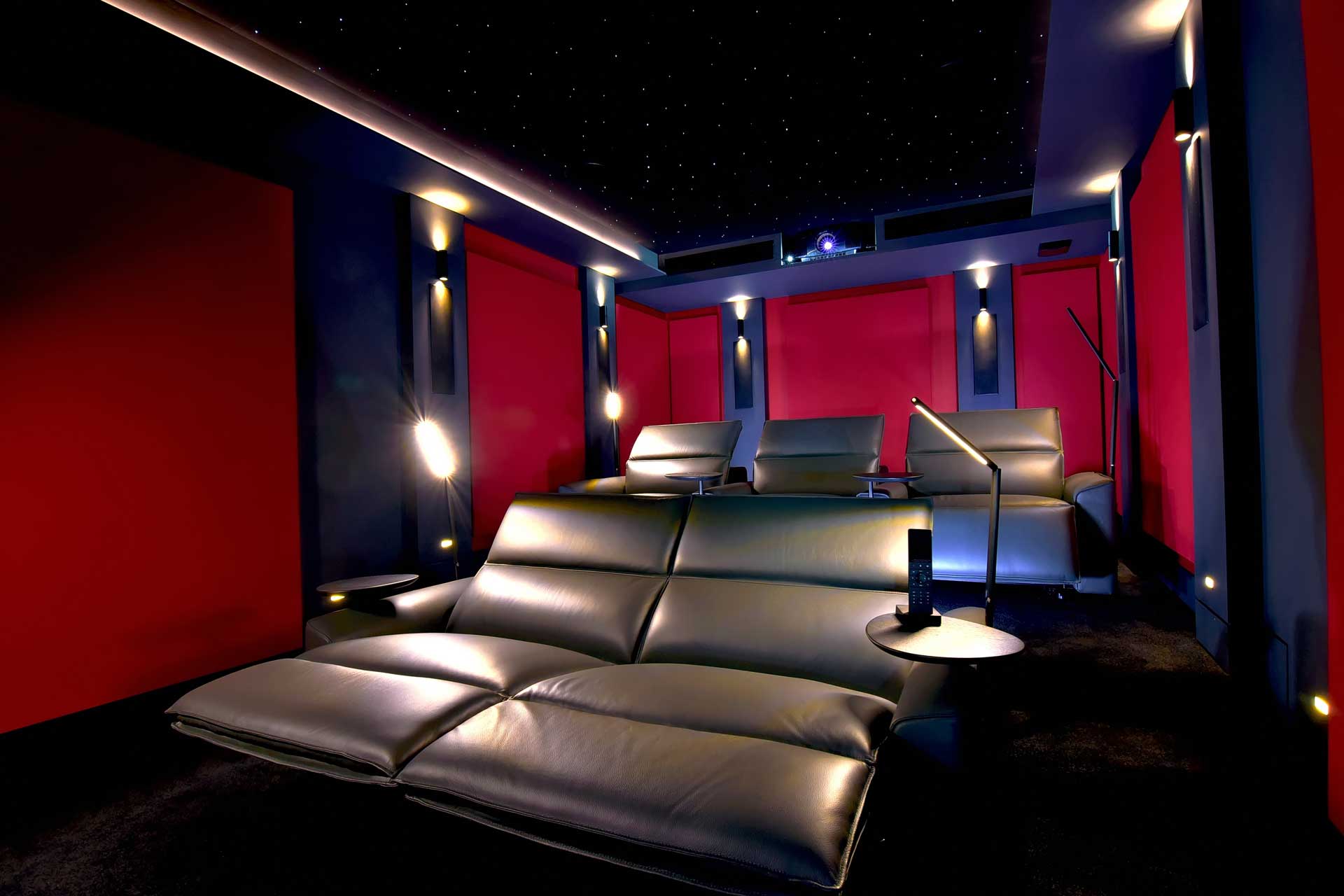
Star quality
Lighting was another key to getting the feel right in the cinema. There’s Crestron lighting, with a Crestron Horizon lighting panel and control of both the lighting and the AV electronics from a Crestron TSR-310 remote control. And hanging above it all is a Sky@Night star ceiling made to order by John Major at Sydney’s Screen Science.
“John was key in advising on the spectacular star ceiling,” says Alberto. “Not only is it a beautiful feature of the room, it’s a very clever solution – they’re made in panels, and John sprayed the overhead speaker grilles with a surface coating that makes them totally non-reflective without affecting the sound.”
It was true that even with the lights up we had to peer very hard into the star ceiling void just to spot where the ceiling speakers have been located.
“Essentially in terms of lighting the key to me was that we’ve got the best of both worlds,” says Alberto. “The lights create an atmosphere for the room; that was a critical thing where I needed to make the room have a bit of warmth. I consulted with a professional lighting expert from Tovo Lighting, and he agreed with the location of the lights to make sure it wasn’t overly lit – it has that cinematic feel. And I had to ensure that when we produce light in the room, all the colours were avoiding any reflection off the screen back to the walls. So when you’re watching a movie, yes you can have the stars still on, but if you really want a pitch black room, to have all the contrast from the screen, you can do that.”
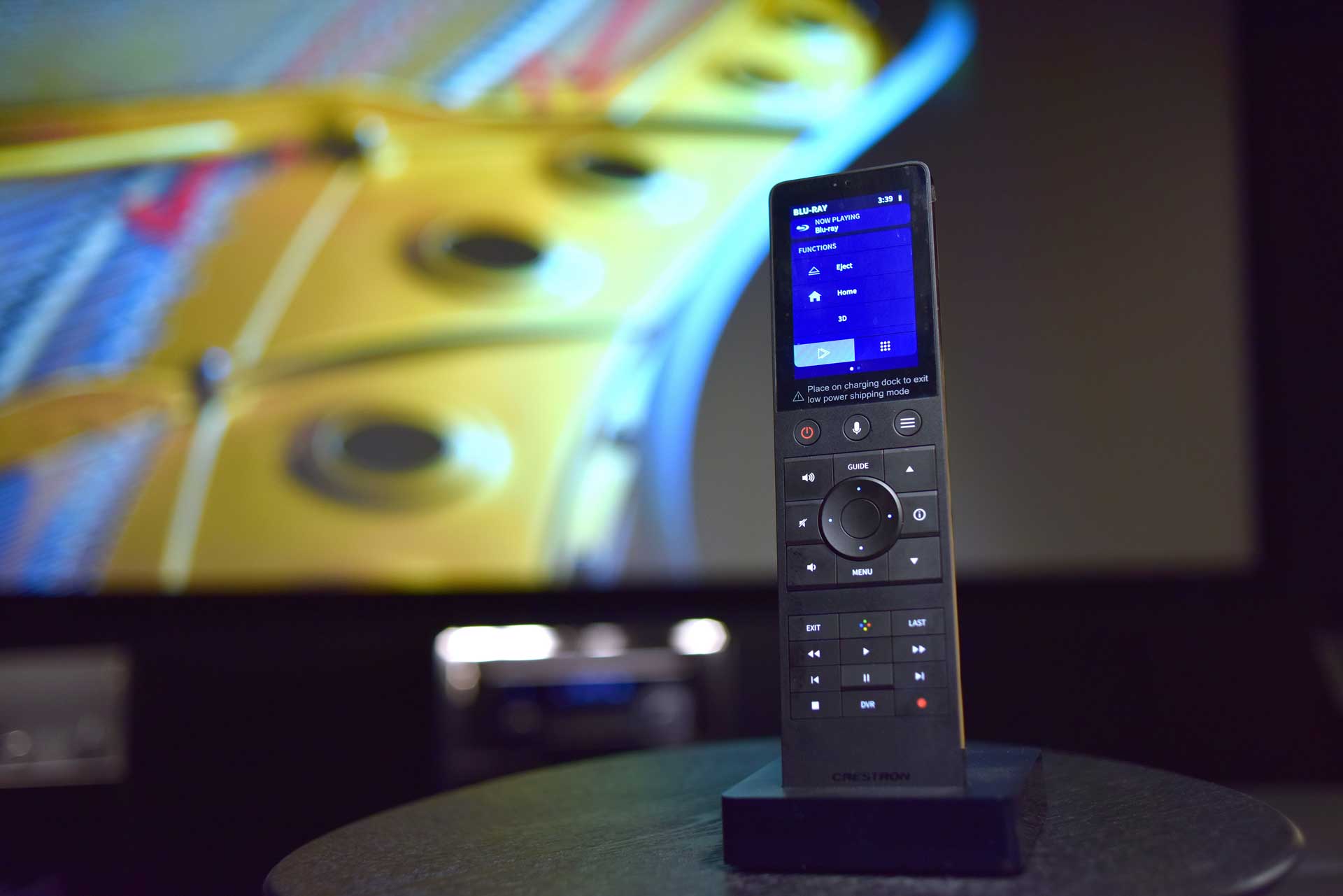
Sound and light
At the heart of the room’s audio system are Yamaha’s top Aventage models, the pre and power combination of CX-A5200 processor/preamplifier and MX-A5200 multichannel power amplifier.
“So that’s an 11-channel power amplifier, being used to power a complete suite of Bowers & Wilkins 700 Series Cinema speakers,” explains Alberto.
The front speakers behind the acoustically-transparent screen are a trio
of B&W CT7.3 units, each with B&W’s noted Nautilus tube-loaded tweeter, a dedicated Kevlar FSTTM midrange and a pair of eight-inch paper/ Kevlar bass units.
Then there are six B&W CWM7.4 S2 speakers (pictured far right)— four as side speaker pairs either side of each seating row, and two for rear surround. Each of these speakers has five drivers — a centrally-positioned tweeter plus twin four-inch Continuum mid/bass and twin four-inch fibre-paper bass cones.
Then the four in-ceiling speakers are B&W CCM7.5 S2 models, each with directable carbon-dome tweeters and seven-inch Continuum mid/ bass cones.
“We combined the two left sides and two right sides to work together, like a commercial cinema,” notes Alberto. “That’s how we were able to have 13 speakers even though there are only 11 channels.”
Four subwoofers are used: “Two at the front, two at the back,” says Alberto, “all 12-inch Sunfires, with the whole idea of having the four subs being to remove the node and to get the perfect balance.”
Meanwhile the projector is Sony’s VPL-VW570ES with its native 4K projection shining 1800 lumens onto the Stewart Filmscreen 160-inch screen. Why a 16:9 screen ratio rather than 2:35-to-1? Matt was clear on that one.
“Xbox gaming!” he beamed at us. “That’s why I wanted it 16:9.”
It also maximises most key viewing formats within the wall space, notes Alberto.
Other sources in the room include a Panasonic 4K Blu-ray player and free-to-air tuner, and an AppleTV 4K. The projector was “tuned to perfection” by ISF calibrator Mick Peaker from Avical.
“His expertise lifted the image to another level of colour accuracy for a truly life-like experience,” praises Alberto.
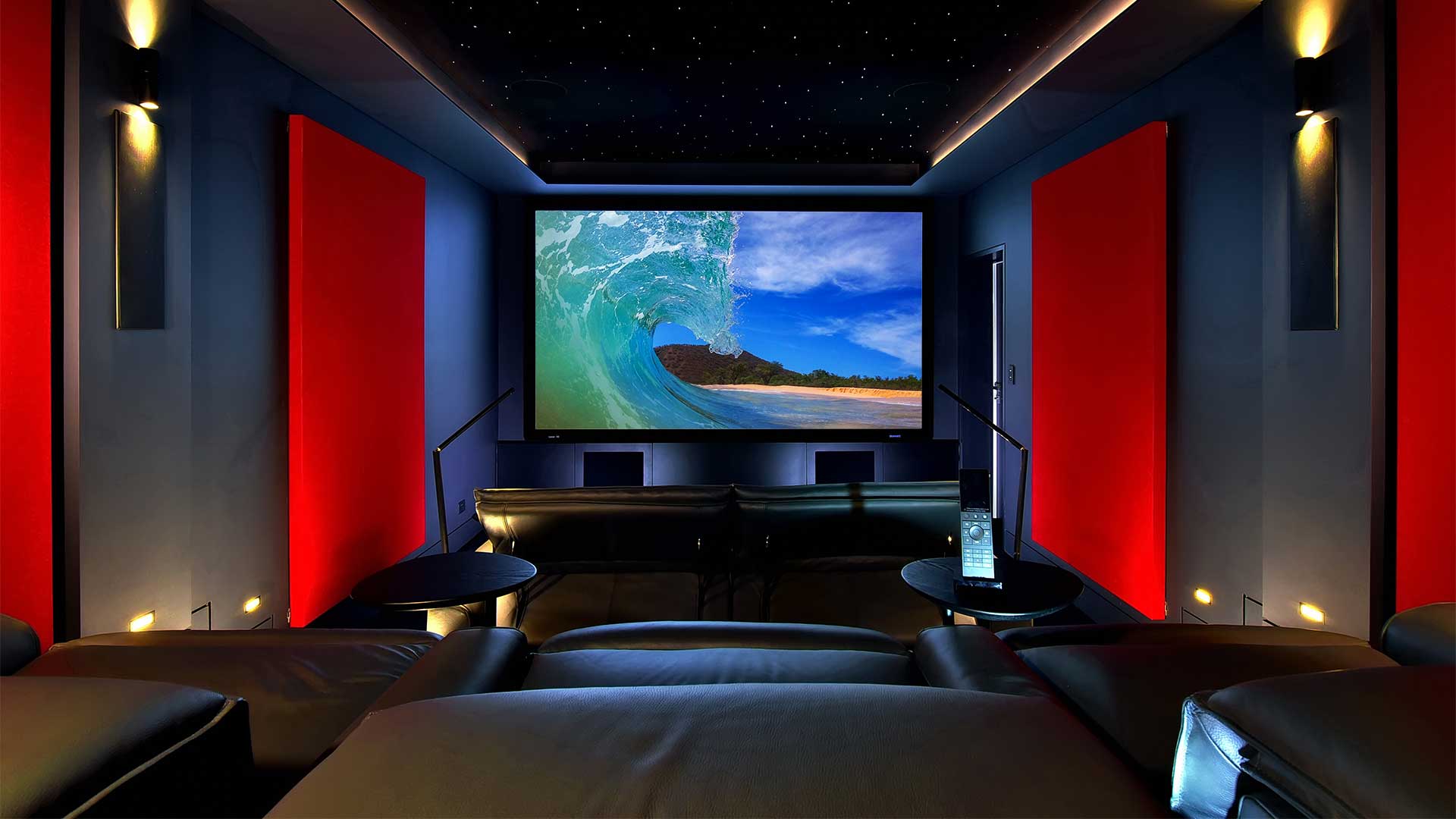
We were able to enjoy a few Atmos test tracks ourselves through this system, and can attest both to the achievement of clear and balanced sound in the room, while nevertheless being able to deliver visceral levels of impact. The raging wind of the storm that closes the ‘Les Saisons’ Atmos demo track was very effective, while the ‘Leaf’ demo confirmed the accuracy of steering, the leaf’s rear pass being particularly strong.
The client, Matt, is clearly equally satisfied, and we’ll give him the final word.
“The acoustics alone are amazing,” he tells us. “It’s so nice and quiet and dark you can sleep in it – in fact we’ve had babies sleeping in here! But once the lights go down and the room comes alive with sound and picture, you’re instantly transported right into the on-screen action. It’s a testament to Alberto’s attention to detail and passion. He understands cinema sound and picture like a cinematographer and sound mixer. In many ways this home cinema outperforms most commercial cinemas – and it could easily be used as a professional screening room. It’s simply that good.”
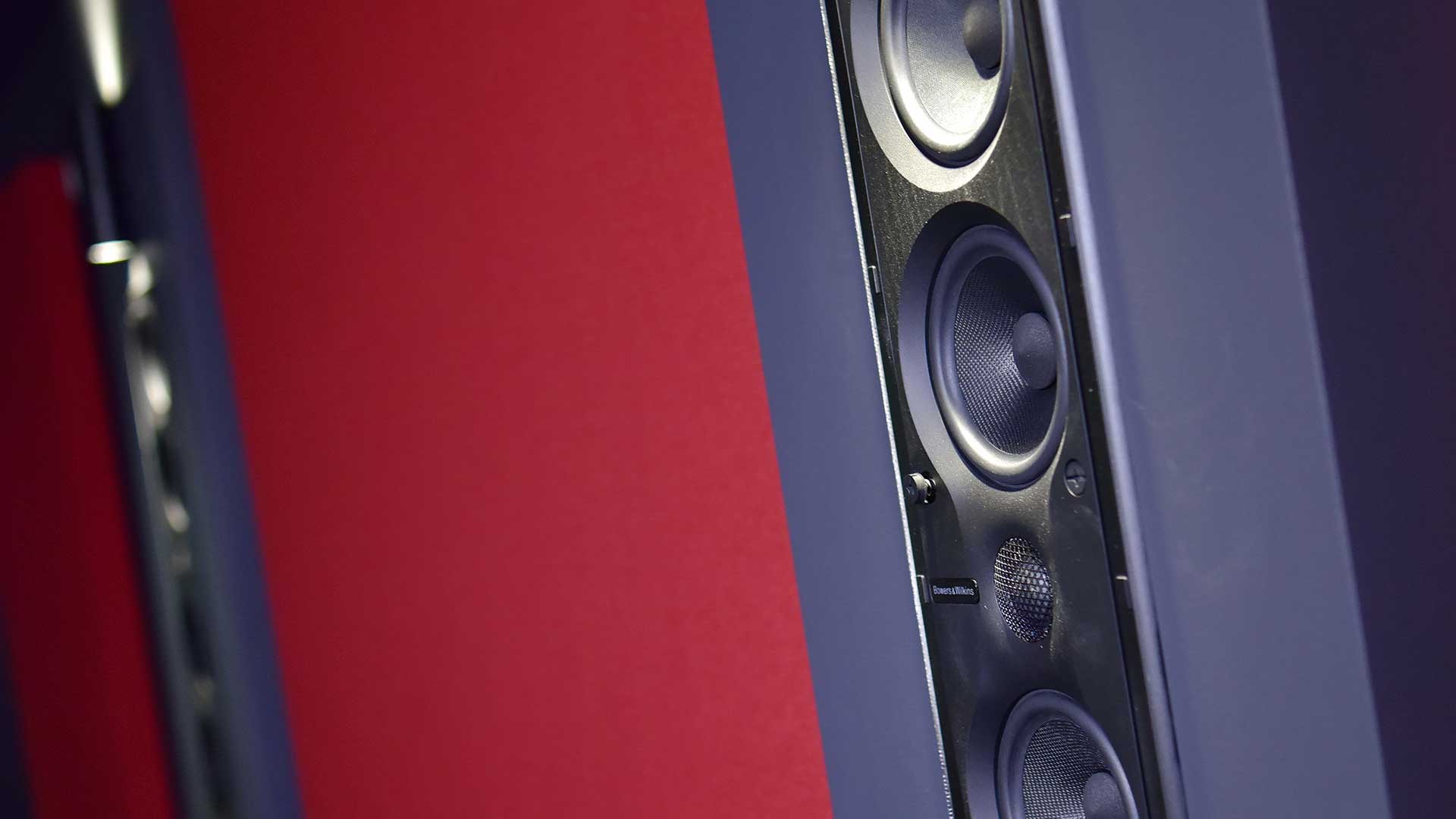
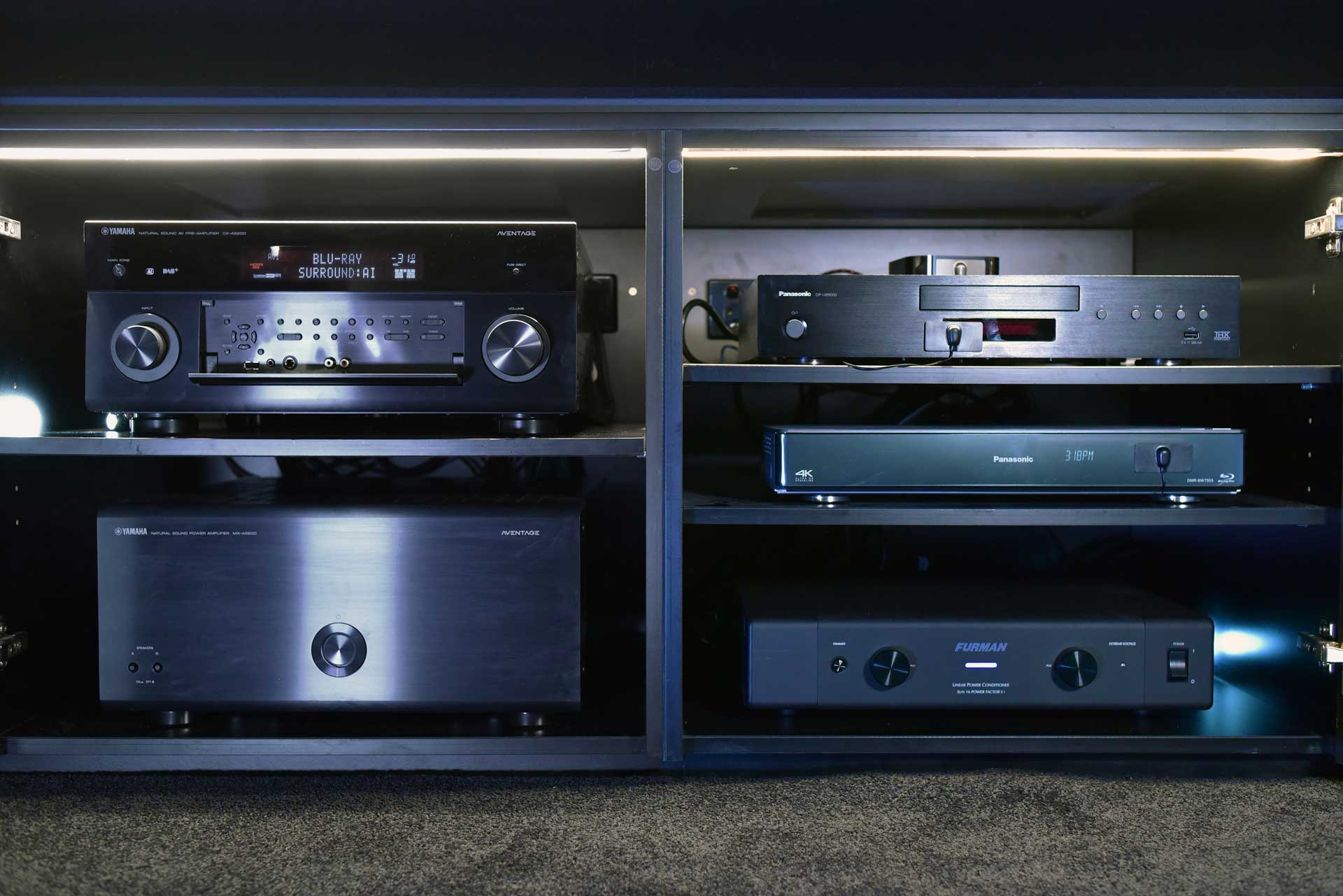
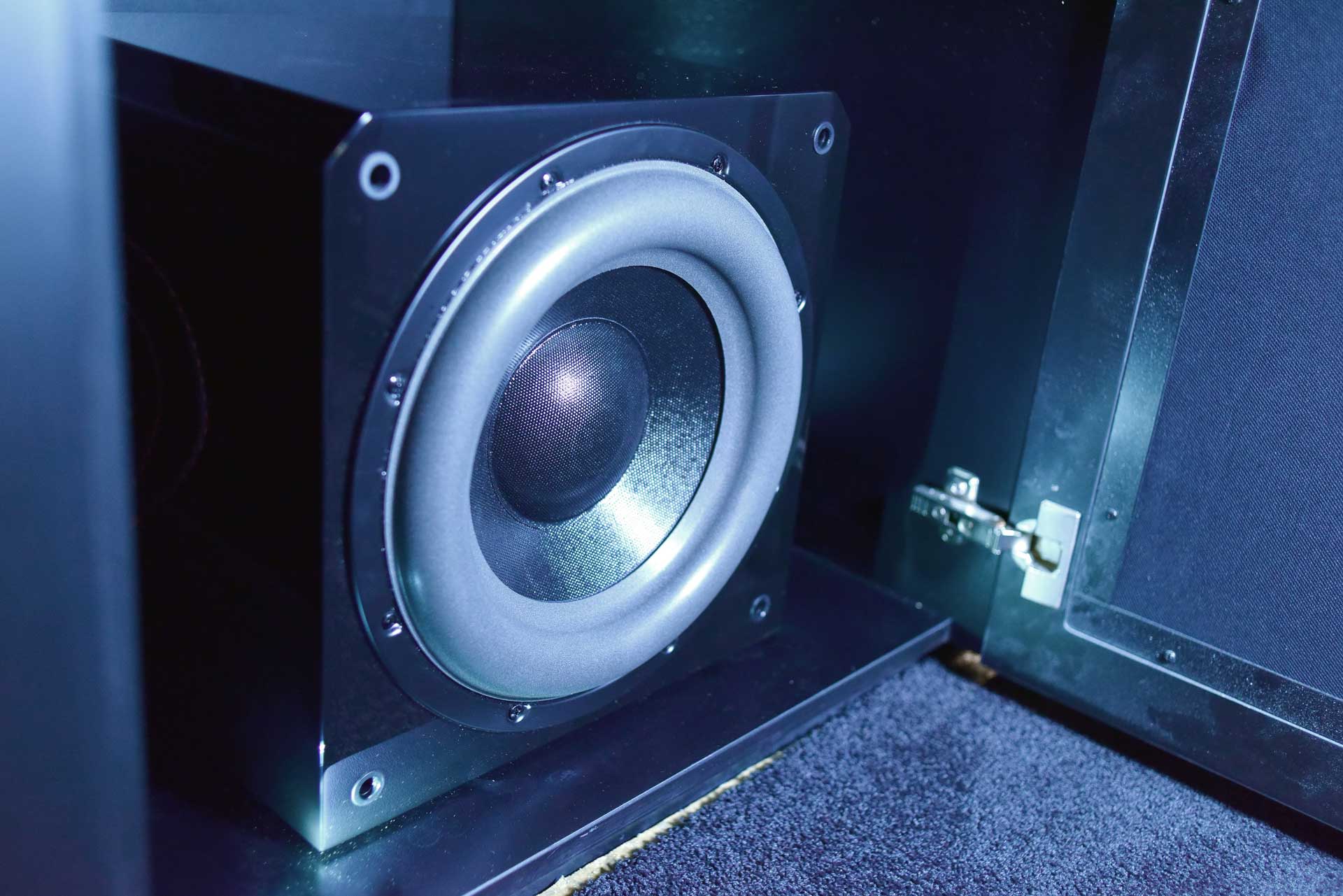
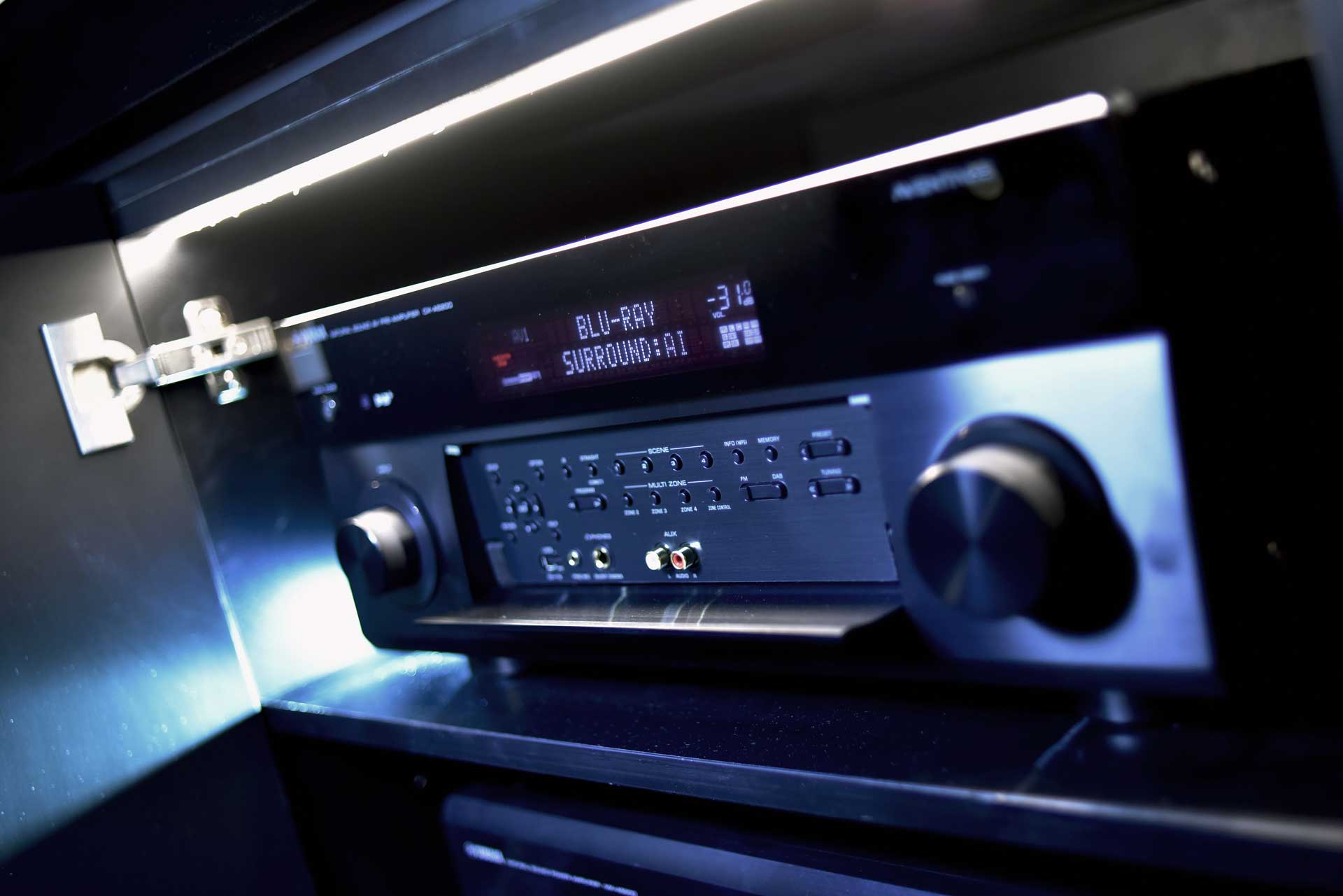
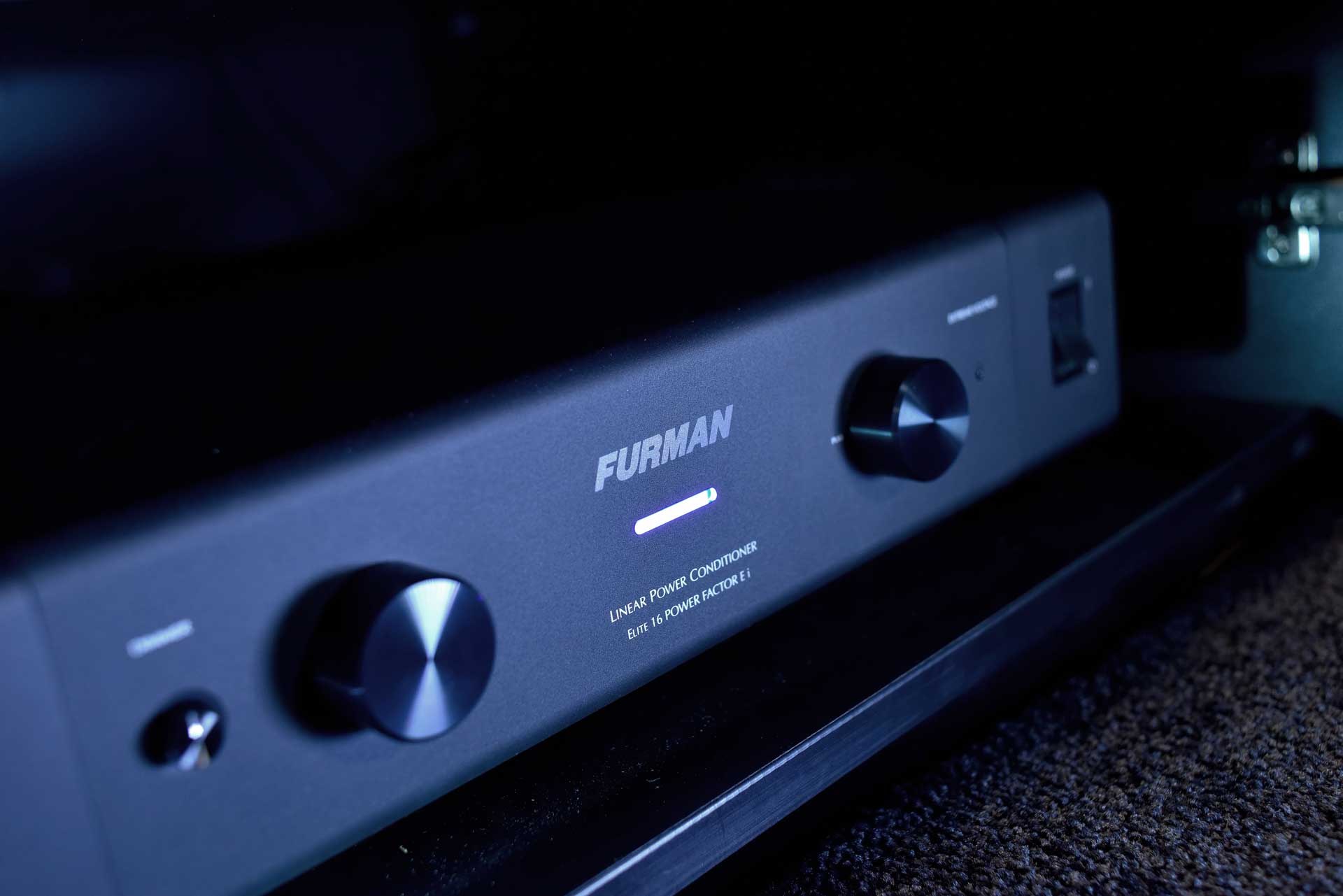
Equipment list
- Sony VPL-VW570ES 4K projector
- Stewart Filmscreen 160-inch 16:9 acoustically-transparent screen
- Panasonic DP-UB9000 4K Blu-ray player
- Panasonic DMR-BWT955GL free-to-air tuner
- AppleTV 4K
- Yamaha Aventage CX-A5200 preamplifier
- Yamaha Aventage MX-A5200 power amplifier
- Bowers & Wilkins CT7.3 LCRS x 3 (LCR)
- Bowers & Wilkins CWM7.4 S2 x 6
- Bowers & Wilkins CCM7.5 S2 x 4 (height)
- Sunfire HRS12 subwoofer x 4
- Xbox One X
- Furman power protection
- Ruckus Wi-Fi & network switch
- King Cloud III seating
- Sky@Night star ceiling by Screen Science
- Crestron control system
- Crestron TSR-310 remote control
- Crestron Horizon light switch
CREDITS - Video calibration: Avical
- Builder: Innovative Building Services
- Acoustic treatment: Ultrafonic
- Networking & IT: Definitive IT Solutions
- Photography: Peter Tsui at Studio Kai
- DESIGN & INSTALLATION Signature Cinemas
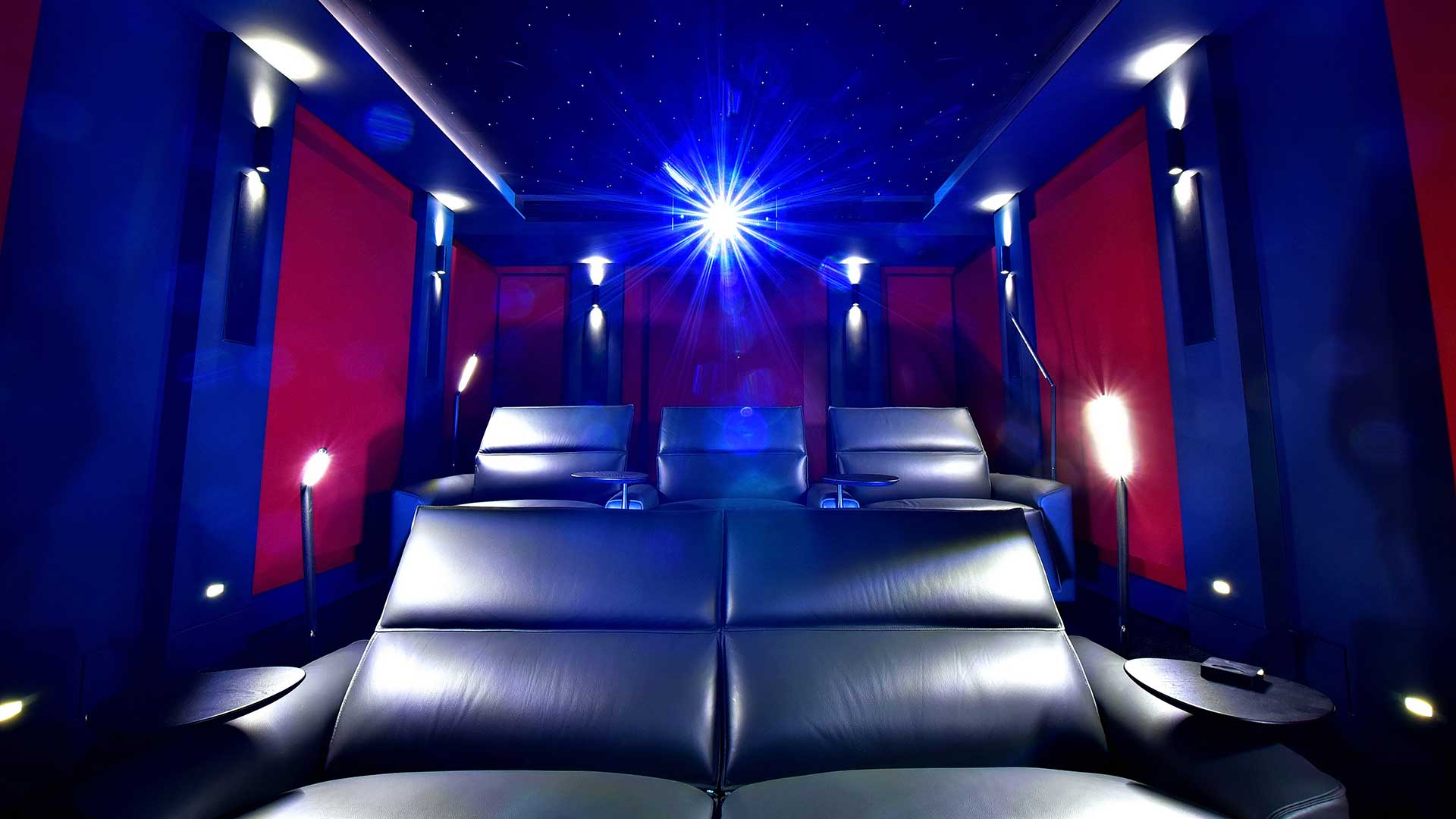
Sound+Image is Australia's no.1 mag for audio & AV – sister magazine to Australian Hi-Fi and to the UK's What Hi-Fi?, and bestower of the annual Sound+Image Awards, which since 1989 have recognised the year's best hi-fi and home cinema products and installations. While Sound+Image lives here online as part of our group, our true nature is best revealed in the print magazines and digital issues, which curate unique collections of content each issue under the Editorship of Jez Ford, in a celebration of the joys that real hi-fi and high-quality AV can bring. Enjoy essential reviews of the most exciting new gear, features on Australia's best home cinemas, advice on how to find your sound, and our full Buying Guide based on all our current and past award-winners, all wrapped up with the latest news and editorial ponderings. Click here for more information about Sound+Image, including links to buy individual digital editions and details on how best to subscribe.
